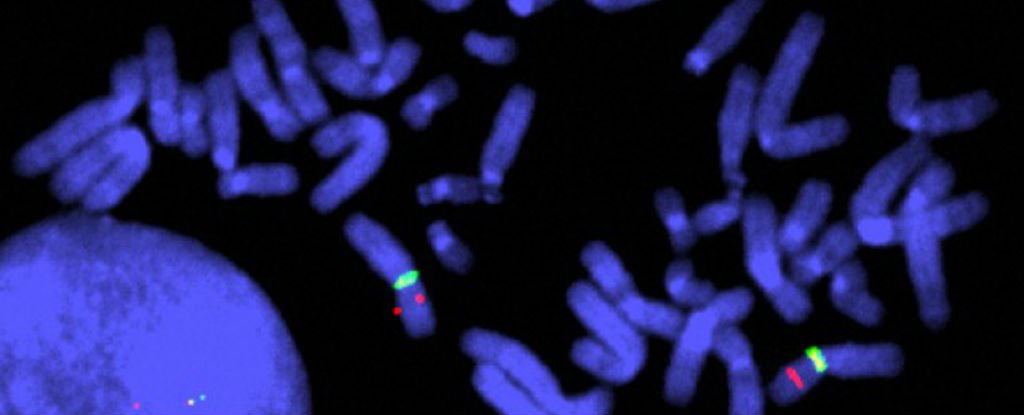In secondary school, we're shown that in the core of each phone, DNA particles are firmly stuffed around proteins called histones to shape our chromosomes.
In any case, new research has found that there's a ton more to chromosomes than the 25,000 or so qualities they contain - researchers have found that a puzzling 'sheath-like' structure records for up to 47 percent of each chromosome.
For over a century, our comprehension of chromosomes has been founded on the suspicion that they're produced using a complex of DNA and histone proteins called chromatin, framed inside the core of every phone.
Since their revelation in 1882, chromosomes have been the subject of extreme concentrate, yet the points of interest of their inside structure have evaded us, in no little part since chromosomes are totally undetectable in the cell's core - unless the cell is partitioning.
At the point when a cell separates by means of meiosis or mitosis, the chromatin inside turns out to be all the more firmly pressed, bringing about the chromosomes to end up "supercoiled" and obvious under a magnifying lens.
The vast majority of what scientists think about chromosomes was found by watching chromosomes amid cell division, but since we can just watch them under specific conditions, we've been working with a fragmented picture of what a chromosome really resembles.
To enhance our capacity to see the inward structures of chromosomes, scientists from the University of Edinburgh in Scotland built up another strategy called 3D-CLEM, which consolidates light and electron microscopy with computational displaying programming to deliver the main high-determination three-dimensional pictures of each of the 46 human chromosomes.
In the wake of demonstrating the length, width, surface territory, volume, and DNA pressing thickness of all typical human chromosomes, they discovered something that could have enormous outcomes for our fundamental comprehension of a chromosome's interior structure.
"Characterizing the structure of each of the 46 human chromosomes surprisingly has constrained us to reevaluate they are made solely out of chromatin - a presumption that has gone to a great extent unchallenged for right around 100 years," says one of the group, scientist Daniel Booth.
In their investigation, Booth and his group observed that chromatin represented somewhere around 53 and 70 percent of the aggregate substance of chromosomes.
A structure called the chromosome fringe - something that scientists have gotten looks of previously, however had no chance to get of knowing how broad it was - represented the rest of the 30 to 47 percent of the 46 chromosomes.
That implies for any given chromosome, DNA and its supporting proteins may represent half of the aggregate substance.
"This first use of 3D-CLEM investigation yielded the amazing, and astounding, determination that an expansive rate of the aggregate volume of mitotic chromosomes is not made out of chromatin, but rather is rather in the fringe compartment," they report in their paper.
At this stage, it's misty what the capacity of this structure really is, however the analysts presume it could go about as a sort of 'sheath', keeping chromosomes disengaged from each another amid cell division.
This is bolstered by past research showing that the structure is in any event mostly shaped as a consequence of the protein Ki-67 - a marker for cell expansion that ties to the chromosome surface to keep sister chromatids partitioned.
In the event that this truly is the capacity of the chromosome sheath, it implies the structure assumes a significant part in keeping blunders from happening when cells partition - something that can prompt to birth abandons and different types of growth.
Other than its capacity, there's still a great deal we don't think about this strange structure - we're not certain on the off chance that it demonstrations like a fluid or a strong film, and it's not clear how it impacts the auxiliary changes of chromatin amid cell division.
So it would appear that it's back to this plan's beginning point for a standout amongst the most basic constituents of a living cell.
As one of the group, Bill Earnshaw, says: "We now need to reevaluate how chromosomes are constructed and how they isolate when cells partition, since the hereditary material is secured by this thick layer of other material."
The examination has been distributed in Molecular Cell.

Comments
Post a Comment